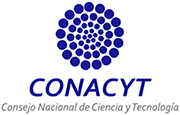Implicaciones del fenómeno publicitario en la configuración del espacio urbano contemporáneo Caso de estudio: Zona de Chapultepec, Guadalajara, Jalisco, México
DOI:
https://doi.org/10.20983/decumanus.2017.1.7Palabras clave:
espacio urbano, fenómeno publicitario, consumismo.Resumen
En la ciudad contemporánea, el fenómeno publicitario, entendido como el despliegue de estrategias, imágenes, campañas, frases, mensajes y demás artilugios persuasivos con el objetivo de vender o dar a conocer mensajes o productos, ha venido ocupando una posición relevante en la forma en la que las urbes de nuestros días son concebidas. El fenómeno publicitario prácticamente envuelve muchas de las circunstancias que definen las características de los lugares y las personas que habitan los espacios urbanos contenidos en las ciudades.
Sin bien la actividad comercial forma parte del funcionamiento básico de la sociedad en general, este tipo de acciones han tenido que adecuarse al dinamismo de un mercado de consumo y consumismo que es impulsado precisamente por la implementación de estrategias y acciones del orden publicitario, tanto a pequeña como a gran escala, que buscan generar la vigencia de las marcas, los productos y los servicios que se ofrecen a una masa de ciudadanos identificados como consumidores, a través de discursos publicitarios cuyo interés fundamental es generar desequilibrios emocionales en los individuos con la finalidad de impulsar cambios en su conducta de consumo. Para cumplir con lo anterior, se requiere necesariamente de un lugar que sirva de soporte para el despliegue de campañas, anuncios y promociones propias del fenómeno publicitario.
En el caso de ciudades como Guadalajara, la existencia y trascendencia de determinados espacios urbanos se debe particularmente al uso que los mismos habitantes le proporcionan en relación con sus intereses y objetivos. Esta relevancia que el mismo ciudadano le otorga, es también identificada como una oportunidad de negocio para las empresas que buscan cubrir sus necesidades económicas, las cuales se ligan directamente con su propia permanencia en el ámbito comercial.
El presente documento identifica algunas de las implicaciones más importantes que el fenómeno publicitario genera en un espacio urbano representativo de la ciudad de Guadalajara: la Zona de Chapultepec. Para hacerlo, se utiliza una metodología que incluye un levantamiento comercial de la zona, el análisis de las opiniones de transeúntes del área de estudio, de usuarios de redes sociales, así como las aportaciones de estudios previos ligados con el crecimiento comercial.
En la parte final del documento se enlista una serie de reflexiones que muestran tener un hilo conductor: el criterio mercantil sobre todas las cosas.
Descargas
Citas
Aprile, O. (2000). La publicidad estratégica. Barcelona, España: Paidós.
Baladrón Pazos, A. y Martínez Pastor, E. y. (2007). Publicidad y ciudad. La comunicación publicitaria y lo urbano: perspectivas
y aportaciones. Sevilla, España: Comunicación Social.
Bueno, C. y Pérez, N. (2006). Espacios globales. México: Universidad Iberoamericana, Plaza y Valdés.
Caivano, J. (2005). Semiótica, cognición y comunicación visual: los signos básicos que construyen lo visible. Buenos Aires, Argentina: Universidad de Buenos Aires, Conicet.
Castells, M. (1974). La Cuestión Urbana. México: Siglo XXI Editores.
Castreje, S., Travieso, C., & Zimmermann, B. (2 de junio de 2013). Hombre y espacio- BOLLNOW, Otto F. (1969). Recuperado
el 7 de Julio de 2017, de IACGroup: http://iacgroup.tumblr.com
Cordero, A.; Ochoa, L.; Núñez, Ó., & Cordero, I. (2011). Manual de uso Lafayette. Distrito Demetria. Guadalajara, México: Montenegro Ediciones, Aquitectura Cordinada.
Eco, Umberto (2005). La estructura ausente. Introducción a la semiótica. México: De Bolsillo.
García Ramírez, F. (2002). Crónica de la publicidad en México. 1901-2001. México: Clío.
González, C. (2007). El significado del diseño y la construcción del entorno. México: Designio.
Ianni, Octavio (2006). Teorías de la globalización. México: Siglo XXI.
Ianni, Octavio (2004). La era del globalismo. México: Siglo XXI.
Leick, G. (2002). Mesopotamia. La invención de la ciudad. Barcelona, España: Paidós.
López Moreno, E. (2001). La cuadrícula: en el desarrollo de la ciudad hispanoamericana: Guadalajara, México. México: Universidad de Guadalajara, ITESO.
Lutz, B. (2010). La acción social en la teoría sociológica: Una aproximación. Argumentos, 23(64).
Maciel, P. (2012). Percepción social de la presencia de la publicidad exterior en la imagen del paisaje urbano contemporáneo. México: Universidad de Guadalajara.
Márquez, M. (2007). Análisis semiótico del concepto actual de belleza en la publicidad dirigida a la mujer. Sevilla, España: Universidad de Sevilla.
Rodríguez, J. & Cota, M. (2006). La transformación económica en la Zona Metropolitana de Guadalajara y su impacto en el desarrollo urbano. México: Universidad de Guadalajara.
Ruíz, O. (2011). Análisis semiótico del signo publicitario en el centro comercial y su relación con la conformación de espacios urbanos globales. México: Universidad de Guadalajara.
Trifonas P. (2004). Barthes y el imperio de los signos. Barcelona, España: Encuentros contemporáneos.











